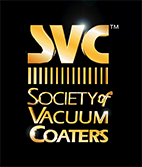Home » Technical Program » Plasma Processing and Diagnostics
Plasma Processing and Diagnostics
This session welcomes contributions focused on the development, understanding, and application of plasma-based techniques for thin film coatings and surface modification. The scope includes both established and emerging approaches for plasma-enhanced deposition and treatment, emphasizing the underlying physical and chemical processes, diagnostics, and modeling strategies that enable performance optimization and scalability in industrial environments.
Topics of interest include:
Plasma Processing and Diagnostics TAC Co-Chairs: Hana Baránková, Uppsala University, hana.barankova@angstrom.uu.se; Kristina Šťastná, PlasmaSolve s.r.o., stastna@plasmasolve.com; Oleg Zabeida, Polytechnique Montreal, oleg.zabeida@polymtl.ca; Assistant TAC Co-Chairs: Lenka Zajickova, Central European Institute of Technology & Masaryk University, lenkaz@physics.muni.cz; Craig A. Outten, Universal Display Corporation, coutten@verizon.net
- Physical vapor deposition (PVD) including magnetron sputter-deposition in conventional and non-conventional arrangements,
- Plasma-enhanced or chemical vapor deposition (PECVD) both on process and application side,
- Plasma-based etching in the semiconductor industry and other applications,
- Development of novel plasma sources for materials processing (e.g., mid-pressure, atmospheric pressure, nanosecond-pulsing, micro plasmas, etc.),
- Hybrid systems and hybrid processes integrating different plasma technologies,
- Atmospheric-pressure plasma processing, including dielectric-barrier discharges and plasma jets,
- Plasma diagnostics for understanding plasma dynamics and plasma-material interaction,
- Modelling and simulation of plasma-surface interactions, and
- Novel plasma processing methods such as treatments of nanoparticles, nanomaterials, and liquids, as well as plasma catalysis.
This session is particularly relevant for industry practitioners, researchers, and scientists:
- Working on the design, scale-up, and implementation of advanced plasma sources and coating technologies,
- Developing novel plasma-based processes or deposition techniques, and
- Engaged in the experimental diagnostics of laboratory or industrial plasma systems.
Plasma Processing and Diagnostics TAC Co-Chairs: Hana Baránková, Uppsala University, hana.barankova@angstrom.uu.se; Kristina Šťastná, PlasmaSolve s.r.o., stastna@plasmasolve.com; Oleg Zabeida, Polytechnique Montreal, oleg.zabeida@polymtl.ca; Assistant TAC Co-Chairs: Lenka Zajickova, Central European Institute of Technology & Masaryk University, lenkaz@physics.muni.cz; Craig A. Outten, Universal Display Corporation, coutten@verizon.net

